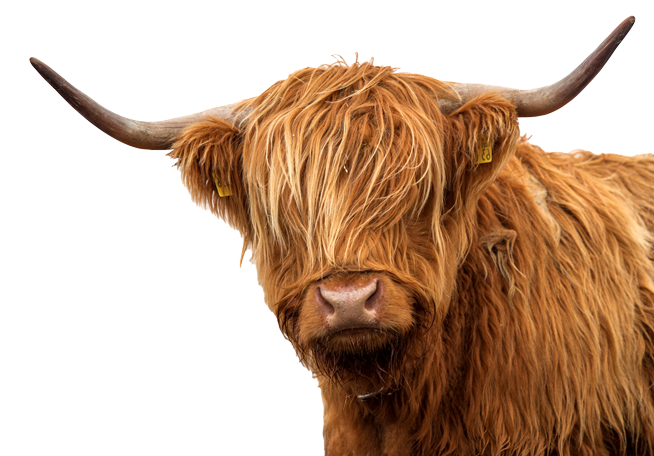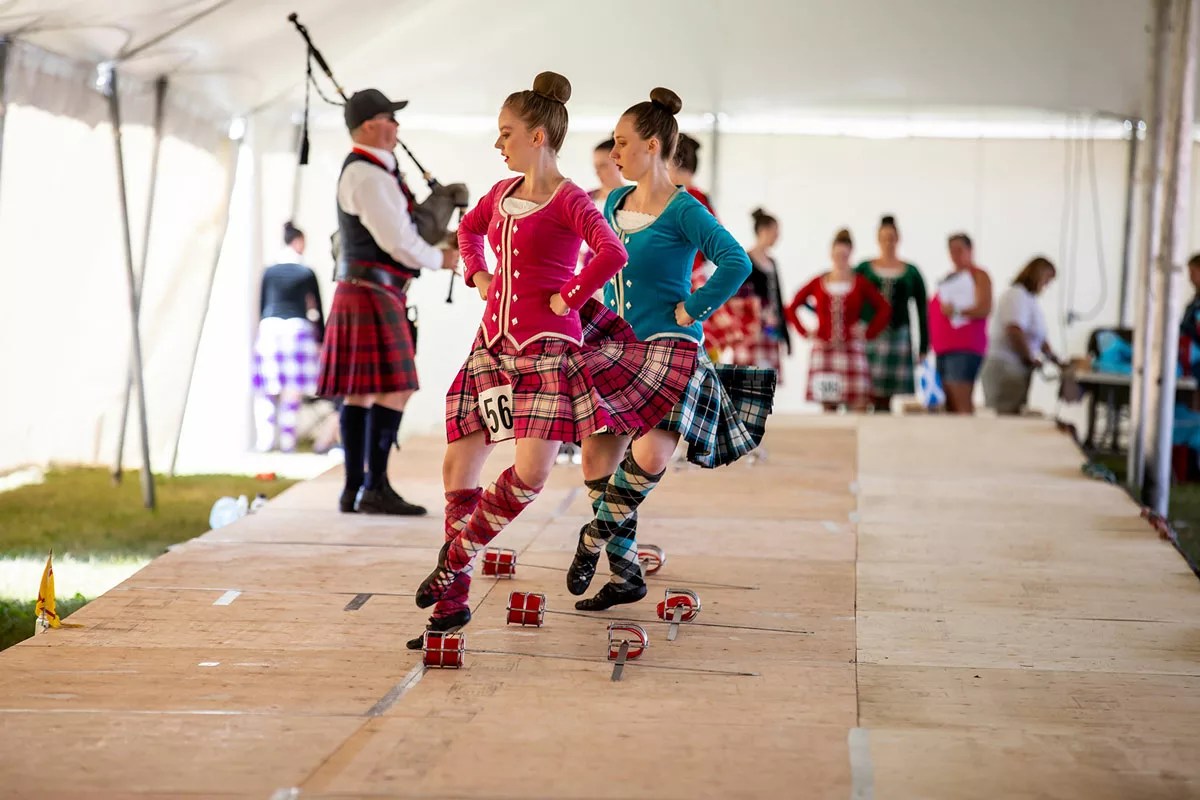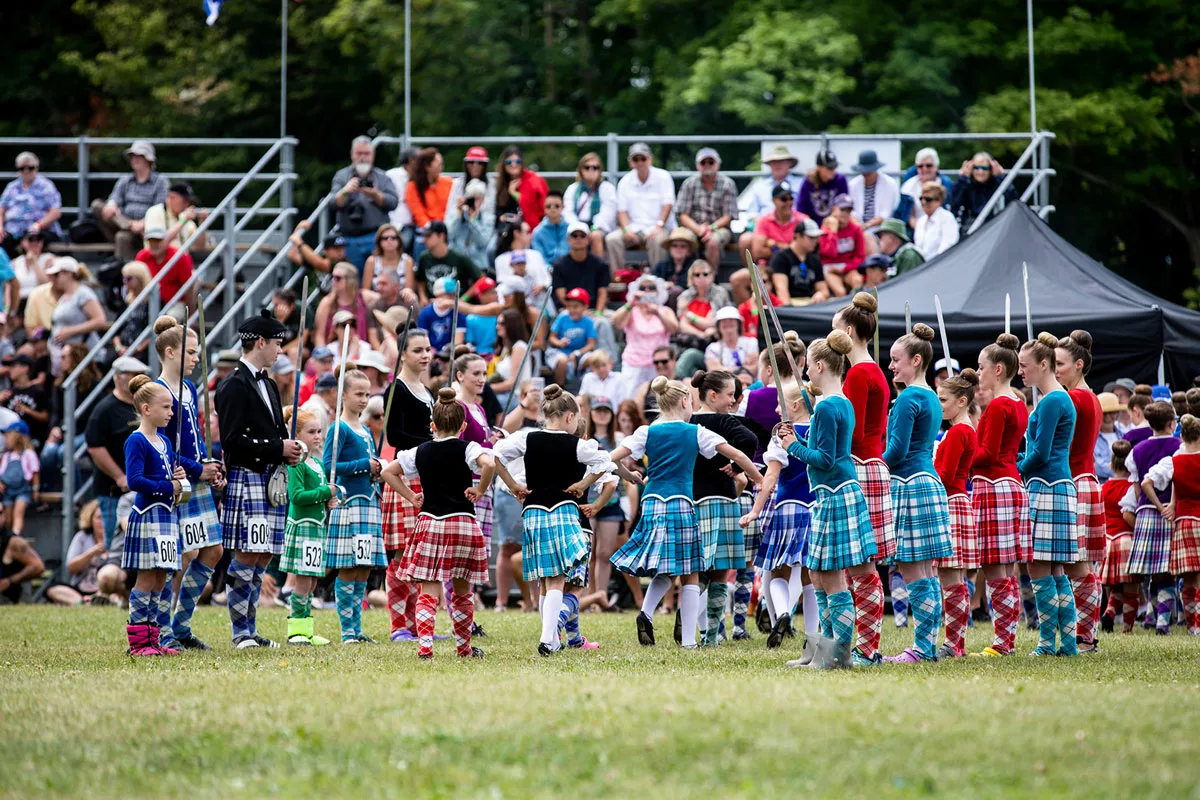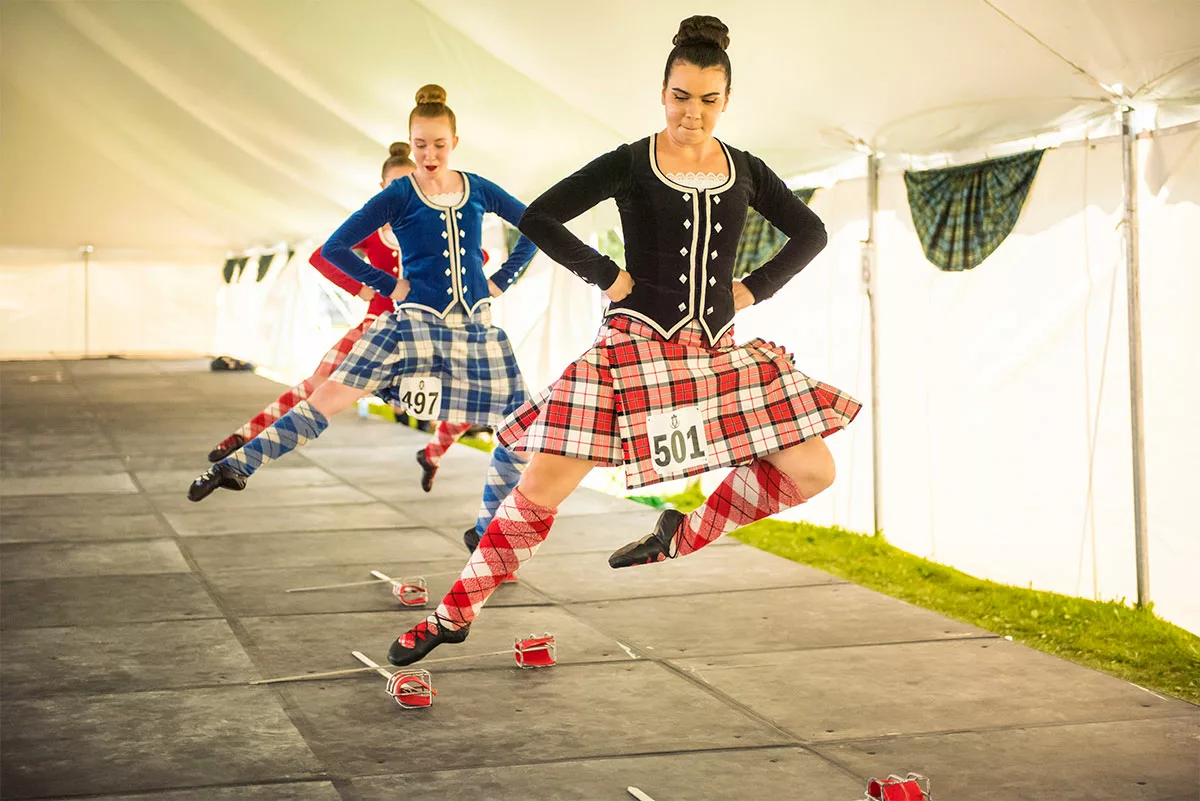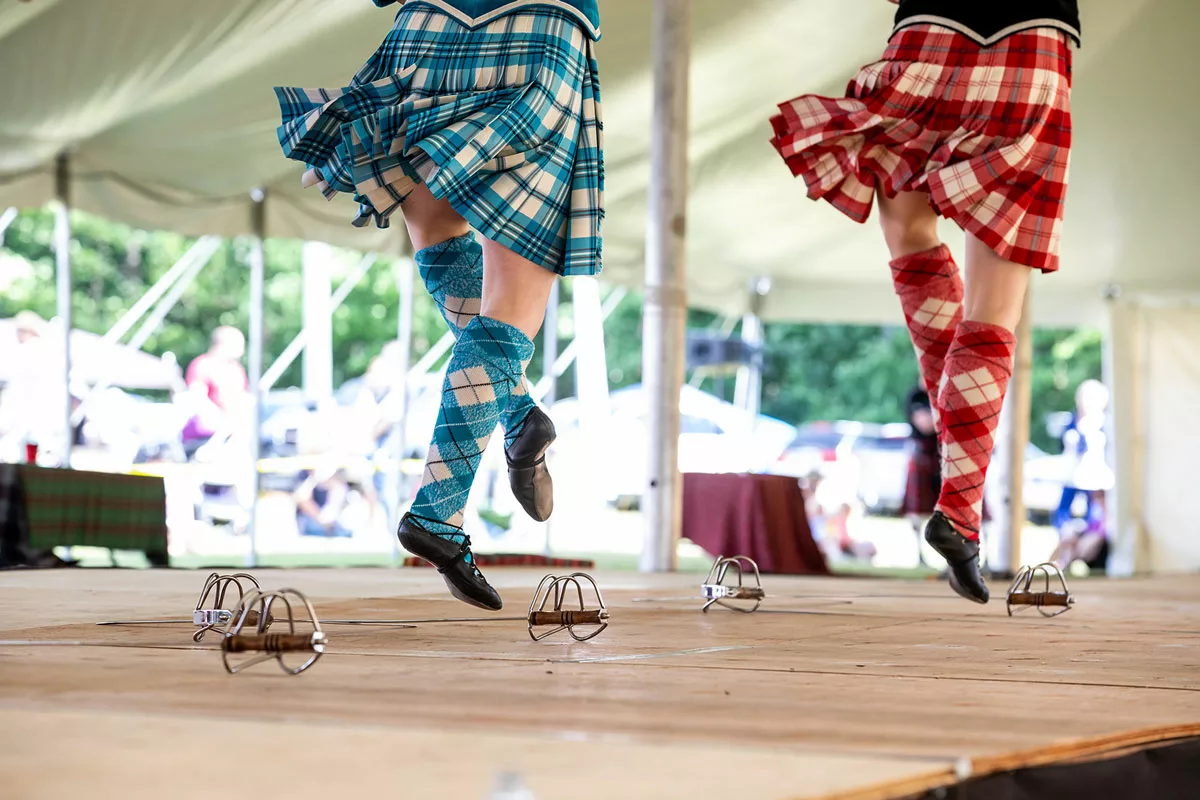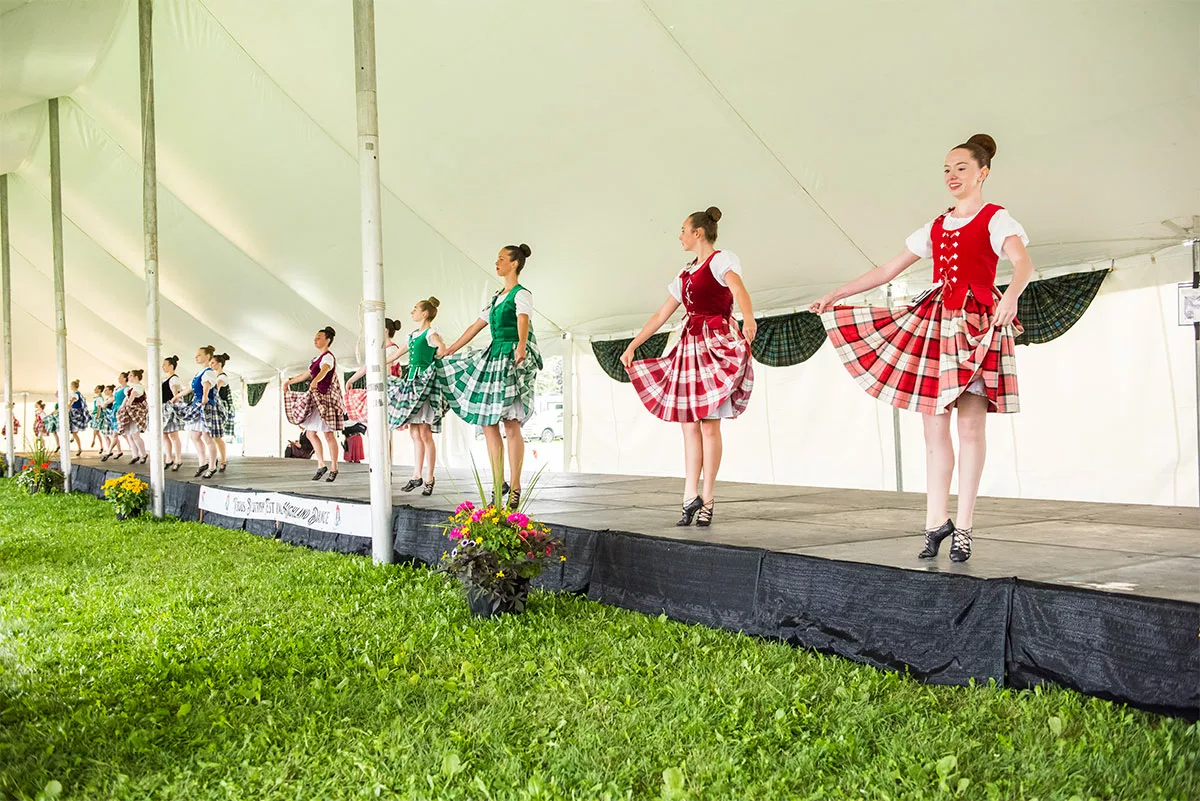
What is Highland Dance
Highland dance is a style of competitive dancing developed in the Scottish Highlands in the 19th and 20th centuries, in the context of competitions at public events such as the Highland games. It was created from the Gaelic folk dance repertoire, but formalized with the conventions of ballet, and has been subject to influences from outside the Highlands. Highland dancing is often performed with the accompaniment of Highland bagpipe music and dancers wear specialized shoes called ghillies. It is now seen at nearly every modern-day Highland Games event including Fergus where kilts of competitors fly and leap throughout the weekend.
See schedule for event details and click on "EVENT LOCATION" to filter by Highland Dance.
Highland Dance Registration

To enter the Fergus Dance competitions, please go to the H.D.A.O. website: https://www.hdaontario.com/
Descriptions of Dances
Sailor's Hornpipe
The Sailor Hornpipe is a character dance based on the traditional dance with origins in the Royal Navy. As the name suggests, the Hornpipe imitates the life of sailors and their duties aboard ship. The hauling of ropes, rowing, climbing the rigging and saluting provide the dance movements. It became more popular in Scotland than in England and is regularly featured in Highland Games. Performed in a special ‘sailor’s suit,’ this dance is extremely vigorous and impressive to watch. The dance employs the same basic positions and many of the same movements found in other dances.
Village Maid
The Village Maid is a flirtatious dance. Designed for ladies, the steps in this dance are flowing and graceful, with a more balletic feel than the Highland dances. It is unusual in that it involves very little hopping and requires the dancer to step on the flat foot in certain movements.
Flora MacDonald's Fancy
This is a dance in honour of Flora MacDonald who helped Bonnie Prince Charlie escape to the Isle of Skye. In 1746 this intrepid young Scotswoman helped Bonnie Prince Charlie escape to France after his defeat at the Battle of Culloden. Such heroism won her the admiration of the Scottish people who honoured her in this dance.
Scottish Lilt
The Lilt exemplifies National dances as it is very graceful and heavily influenced by ballet. It is an unusual dance because it has only six beats per measure rather the standard eight.
Highland Fling
One legend associates it as a warriors dance of triumph following a battle. It was supposedly danced over a small round shield, with a spike projecting from the centre, known as a Targe. Yet another legend links the dance to a young boy imitating the antics of a stag rearing and wheeling on a hillside; the curved arms and hands representing the stag’s antlers.
Gillie Callum (Sword Dance)
One story said to originate from the times of Shakespeare’s Macbeth, recalls that when King Malcolm III (Canmore) of Scotland killed a fellow chieftain in battle, he celebrated by dancing over his own bloody claymore crossed with the sword of his enemy. Yet another story tells that a soldier would dance around and over crossed swords prior to battle; should his feet touch the blade during the dance however, then this was considered an ill omen for the following day. Another and more practical explanation is that the dance was simply an exercise used to develop and hone the nibble footwork required to stay alive in sword play.
Seann Triubhas
Gaelic for “old trousers” – Pronounced “shawn trewus”, the dance is romantically associated with the highlander’s disgust at having the wear the hated Sassenach trousers that they were forced to wear when the kilt was banned following the 1745 rebellion. The initial slow dance steps involve lots of leg shaking; symbolising attempts to shed the hated garments; the final faster steps demonstrating the joy of returning to the kilt when the ban ended in 1782.
Reel
Of all the Highland Dancing events in which the competitors vie, the reels are the closest approach to social dancing. While the teams consist of four dancers, the judges mark each competitor individually. The Half Tulloch as its name suggests is a shorter version of the Reel of Tullloch. Legend has it that the reel originated outside a locked church in the Highland village of Tulloch, where it was danced by chilly parishioners as a method of keeping warm while waiting for a tardy clergyman.
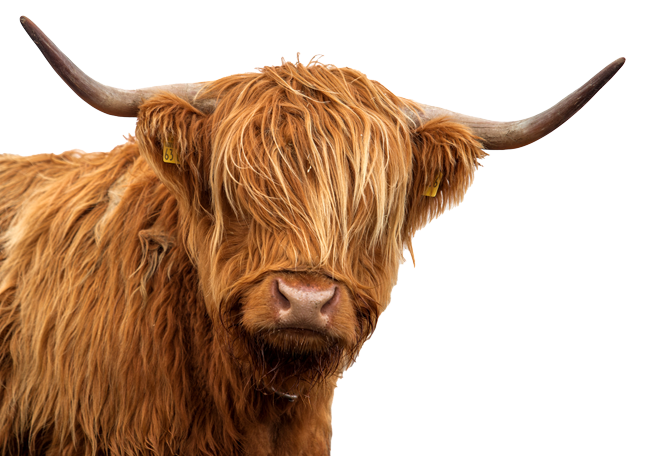
FAQ & General Info
General questions about Festival weekend?
Visit our General Information and FAQ’s page!
